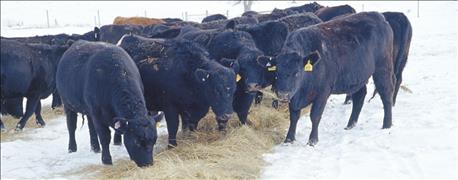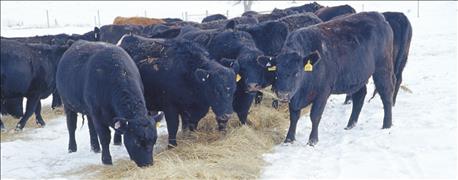November 23, 2016

Severe flooding last summer impacted much of western Wisconsin, home to a large amount of the state’s beef cattle. Rain events were so intense that Gov. Scott Walker declared 12 counties in the state agriculture disaster areas. Standing water impeded harvest and limited pasture usage for grazing operations.
This time of year, producers are feeding hay stores, some of which might have been impacted by last summer’s rain. Weather events like this can make large impacts on forage quality. One concern with the 2016 forage crop could be higher-than-normal ash content.

NO ASH: If you have forage that is highly contaminated with soil from extreme rain events or harvesting practices, ideally, you would feed that as a last resort.
What is ash?
Ash is the total mineral portion of the forage, grasses naturally containing around 5% to 6% and alfalfa typically 6% to 8%. Ash can be further broken down into two categories, endogenous and exogenous. Endogenous minerals come from within the plant and are of important nutritional value to the cow, such as calcium, potassium, phosphorus, magnesium, etc. Exogenous minerals are those found on the outside of the plant, but provide no energy or protein value to the animal. This additional ash is mostly from soil contamination, specifically from the sand portion of the soil. This can be caused by soil erosion due to flooding, where forage was submerged for a period of time, or lodging of the forage stand from severe floods or winds, which increases soil contact. Harvesting equipment that uses air pressure to lift lodged forages or rake tines set too close to the ground could compound the contamination even further. Even if harvest goes smoothly, soil contamination can occur simply because of storage and feeding practices.
The reason exogenous ash is of concern is because it provides no nutritional value while taking up space in the diet for other more valuable nutrients to be consumed. On average, cattle consume roughly 2% of their body weight in dry matter daily. In expectant cows, this amount decreases as the fetus continues to grow and competes against the rumen for space in the cow’s body. If a large percentage of that dry matter is exogenous mineral content, then they are less likely to be consuming valuable nutrients like protein or energy, which a growing fetus needs.
You might be thinking to yourself, "Well the forage is already harvested and stored for the season." But you can still make informed feeding decisions. If you happen to have forage that is highly contaminated with soil from extreme rain events or harvesting practices, ideally you would feed that as a last resort if you can.
If you must feed already contaminated hay, the first step is to limit additional contamination during feeding. Keep hay off the ground and contained during feeding. Limit moving hay bales over and over again. The second step you can take is to test your hay. Forage analysis should be a part of your nutritional program if it isn’t already. This tool allows you to match the nutrition available with the nutritional needs.
You could feed contaminated hay to cows in early to mid-pregnancy, since they typically do well on lower-quality forages, and reserve higher-quality feeds for cows in late pregnancy or early lactation. High levels of ash won’t necessarily harm your cattle, but awareness is key to make proper management decisions.
Ely is the Walworth County Extension ag educator.
You May Also Like




